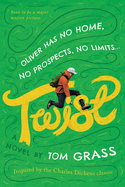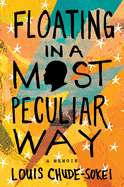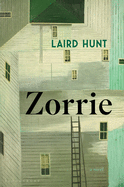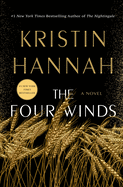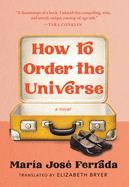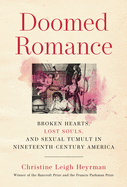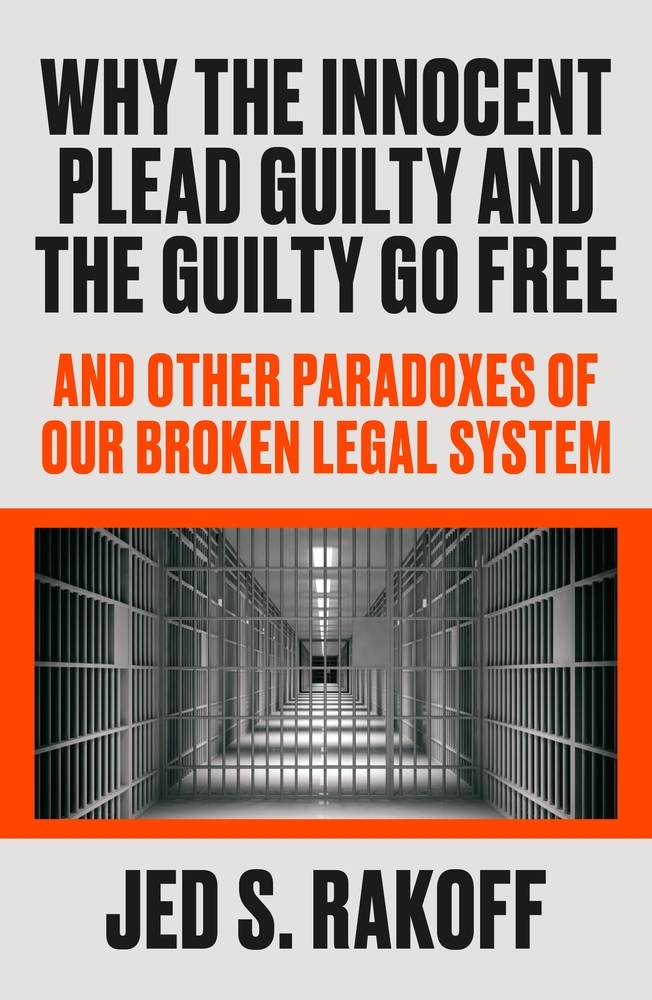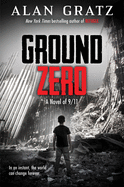Friday, February 19, 2021
Since that horrible little groundhog said winter will be lingering for several more weeks, why not weather that time over a bowl brimming with hot, decadent flavors?
 Recently, my boundless love of soup inspired me to tackle one of the recipes in Yotam Ottolenghi's Plenty More (Ten Speed Press, $35). This master chef's dishes are often considered to be on the more complicated side of the menu, but to my delight, his Curry Laksa is rather straightforward. This rich, spicy noodle soup starts by sautéing a paste made from shallots, garlic, ginger, lemongrass, coriander and sambal oelek. Then, let it simmer with vegetable broth, coconut milk and curry leaves. When it's time to serve, build bowls with your desired combination of rice vermicelli, green beans, bean sprouts, fried tofu and lime. That's pretty easy in my book!
Recently, my boundless love of soup inspired me to tackle one of the recipes in Yotam Ottolenghi's Plenty More (Ten Speed Press, $35). This master chef's dishes are often considered to be on the more complicated side of the menu, but to my delight, his Curry Laksa is rather straightforward. This rich, spicy noodle soup starts by sautéing a paste made from shallots, garlic, ginger, lemongrass, coriander and sambal oelek. Then, let it simmer with vegetable broth, coconut milk and curry leaves. When it's time to serve, build bowls with your desired combination of rice vermicelli, green beans, bean sprouts, fried tofu and lime. That's pretty easy in my book!
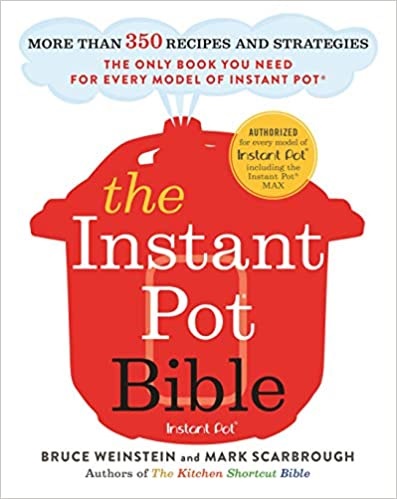 Even easier is the Three-Lentil Dal Makhani from The Instant Pot Bible (Voracious, $19.99) While there is something distinctly satisfying about a soup broth, I'm a sucker for most hot and flavorful meals served in a bowl. This dal packs a powerful punch of flavors--garam masala, cumin, turmeric, cinnamon and cardamom--in an irresistibly creamy curry. Thanks to pressure cooking technology, it requires only about a half an hour. And I always have garlic naan ready to dip.
Even easier is the Three-Lentil Dal Makhani from The Instant Pot Bible (Voracious, $19.99) While there is something distinctly satisfying about a soup broth, I'm a sucker for most hot and flavorful meals served in a bowl. This dal packs a powerful punch of flavors--garam masala, cumin, turmeric, cinnamon and cardamom--in an irresistibly creamy curry. Thanks to pressure cooking technology, it requires only about a half an hour. And I always have garlic naan ready to dip.
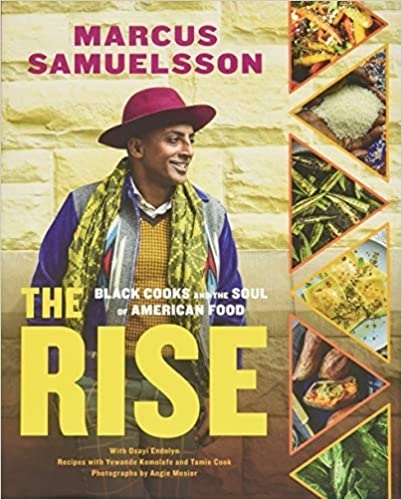 Finally, Papa Ed's Shrimp & Grits, from Marcus Samuelsson's culinary marvel The Rise (Voracious, $38), is an outstanding flavor powerhouse. These stoneground grits get shredded white cheddar, for starters, and the tomato sauce marries chorizo, smoked paprika, cayenne, garlic, okra and apple cider vinegar. I didn't have the fish stock to make it properly, but even with chicken stock it turned out magnificently. How soon is too soon to repeat a dish in your home cooking? Because my bowl is empty, but I'm not finished yet! --Dave Wheeler, associate editor, Shelf Awareness
Finally, Papa Ed's Shrimp & Grits, from Marcus Samuelsson's culinary marvel The Rise (Voracious, $38), is an outstanding flavor powerhouse. These stoneground grits get shredded white cheddar, for starters, and the tomato sauce marries chorizo, smoked paprika, cayenne, garlic, okra and apple cider vinegar. I didn't have the fish stock to make it properly, but even with chicken stock it turned out magnificently. How soon is too soon to repeat a dish in your home cooking? Because my bowl is empty, but I'm not finished yet! --Dave Wheeler, associate editor, Shelf Awareness
Twist
by Tom Grass
First-time novelist Tom Grass mixes the pickpocketing-street-orphans concept of Charles Dickens's Oliver Twist with death-defying derring-do to create the breathless art-heist thriller Twist. In this clever reboot, the eponymous hero is an 18-year-old homeless graffiti artist who uses his street smarts and parkour abilities to elude the police pursuing him for consistent vandalism and breaking parole.
When Twist paints a larger-than-life replica of a famous painting on the very museum housing the masterpiece, apprehending him becomes a priority. He is caught and badly beaten by the police, but a gang of thieves led by a man named Fagin comes to his rescue. In return, the group insists Twist join their profession: stealing stolen priceless artworks and returning them to the rightful owners. Twist sees through Fagin's claim of working with insurance companies to recover stolen property, but before he can refuse Fagin's mentorship, Twist meets Red, a beautiful gang member and its best thief. Twist is smitten, despite Red being attached to an older and meaner member. Blinded by a hopeless attraction to Red and a desperate desire for a better life, Twist agrees to join Fagin's group to pull off a dangerous heist with a potentially huge payoff.
Grass's Twist turns Dickens's children into self-sufficient, computer-savvy young adults. The Oliver in this version is neither defined by nor a victim of his past, but his pluck and moral center make him an even stronger hero than the original. From the opening pages to the vertigo-inducing climatic battle on a rooftop, this modern-day thriller screams for a movie adaptation. --Paul Dinh-McCrillis, freelance reviewer
Discover: Charles Dickens's Oliver Twist gets an edgy, modern reboot in this action-packed heist thriller.
Zorrie
by Laird Hunt
Laird Hunt (The Evening Road; Neverhome) explores the microcosm of rural Indiana through Zorrie's eyes in this beautiful and intimate historical novel. After being orphaned young and moving in with her harsh and cold aunt, Zorrie leaves her home in Indiana to start life independent of her past. Her travels do not take her far, but the impact these experiences have resonates through her life. Her short stint as a "radium girl" in Ottawa, Ill., and the friendships she made there were not enough to keep her in the neighboring state. Home beckons her back to Indiana, to a small farm close to where she grew up. That little farm introduces her to her husband and, from there, brings her a new profession in agriculture.
Hunt illustrates the ripple effect of Zorrie's small choices in poetic and thoughtful language. Zorrie's idyllic life on her farm is disrupted by tragedies--deaths of loved ones, a miscarriage, unrequited love. But these never discourage Zorrie's lust for living. Though her life is overall a quiet one, her desire to live fully never ceases. Readers will easily connect to her drive to succeed and be a part of her community while discovering her passions. Hunt packs Zorrie's whole life in this slim book of fewer than 200 pages, but it doesn't feel short, nor does it feel too long. Zorrie's life may seem simple to some, but it's a rich well of experiences worth exploring. --Amy Dittmeier, librarian, Chicago, Ill.
Discover: Through loss, grief and tragedy, Hunt's lyrical and intimate novel shows that life is not a sum of its negative experiences but a collection of joyful moments.
Good Neighbors
by Sarah Langan
The residents of Maple Street put up a façade of being neighbors anyone would want--concerned parents involved with their children's extracurricular activities and college prep, maintaining their pristine properties and throwing great parties to which everyone is invited. But this endless cycle of keeping up appearances gets turned upside down when the unkempt, indifferent Wilde family moves into this Long Island suburb, in Bram Stoker Award winner Sarah Langan's (Audrey's Door) intensely plotted Good Neighbors.
Set in 2027, Good Neighbors sharply illustrates a suburban murder that defines the 21st century. Former rock star and recovered junkie Arlo Wilde and his beauty queen wife, Gertie, don't really care about fitting in and do little to fix up their dilapidated home. Their children, 12-year-old Julia and eight-year-old Larry, who may be autistic, are a bit wilder, less disciplined than the other Maple Street kids. Gertie finds an unlikely ally in Rhea Schroder, a community college professor and neighborhood "Queen Bee" who makes Gertie her new best friend, confiding intimate details. But friends become enemies when Rhea believes that Gertie isn't as sympathetic as she wants her to be. Rhea turns the entire neighborhood against the Wildes when a vile rumor about Arlo circulates. Blamed for even the smallest infraction, the Wildes become a convenient scapegoat when a sinkhole suddenly opens, destroying property values on Maple Street. A girl's disappearance further riles the neighbors to violence, akin to a mob carrying pitchforks and torches. An eventual murder will have reverberations for generations.
The author uses the sinkhole metaphor to strong effect, as the neighbors' penchant for foul gossip increases. Langan employs cutting wit and a razor-edged perception of people engorged by their capacity for hatred. --Oline H. Cogdill, freelance reviewer
Discover: In this sharply plotted look at a suburban murder, vile gossip is as destructive as the sinkhole that appears in a Long Island neighborhood in 2027.
The Four Winds
by Kristin Hannah
From "unmarriageable" to fierce migrant mother, Elsa Martinelli defies the tragedy of the Great Depression as Kristin Hannah (The Nightingale; The Great Alone), once again compassionately portrays a resilient woman, in her 24th novel, The Four Winds.
In the Texas Panhandle of 1921, 25-year-old Elsa Wolcott was deemed a spinster, shunned even by her privileged family. When Rafe Martinelli "dishonors" Elsa, her father literally drops her on the Martinelli farm. Elsa earns her new family's acceptance, giving birth to their granddaughter Loreda, and then a boy, Ant. But after years of crop failures, the Dust Bowl erodes both the farm and the family.
Again abandoned when Rafe leaves them, Elsa remains devoted to her in-laws and the land that now chokes them with dark clouds of dirt. In 1935, Ant nearly dies of "dust pneumonia," and so, with adolescent Loreda's prodding, she reluctantly sets off for "that land-of-milk-and-honey nonsense": California. Hannah inserts Loreda's voice, alternating the young woman's feisty perspective with the third-person narrative, emphasizing the era's multi-generational suffering. In California, they are ridiculed as "Okies," starved in squalid camps and exploited as field workers. Thirteen-year-old Loreda, ever defiant, grows receptive to Workers Alliance labor organizers. Her attraction to the "Reds" brings a climax to the plot both historic and personal. Elsa cites "loss and poverty and man's mistakes" for the economic and climate disasters, but it is Loreda who expresses a satisfying epitaph to the family's saga, describing Elsa: "She taught me to stand up and find my woman's voice, even in this man's world." --Cheryl McKeon, Book House of Stuyvesant Plaza, Albany, N.Y.
Discover: Kristin Hannah creates another resilient woman in this elegiac saga of fleeing the Texas Panhandle at the height of the Depression.
How to Order the Universe
by María José Ferrada, transl. by Elizabeth Bryer
María José Ferrada's How to Order the Universe offers an imaginative view of Pinochet-era Chile through a child's eyes, as she assists her father in his work as a traveling salesman of Kramp brand hardware items. The world appears complex, fascinating and a little magical to M, the narrator. Elizabeth Bryer's whimsical translation from the Spanish feels appropriate to M's exceptional perspective.
Ferrada's playful, poignant novel opens with the story of a young man named D, whose "first sales attempt happened the same day a man took a step on the moon." He meets a beautiful woman. They marry and have a child, M, and so the narrator enters her own story. She begins accompanying D on his sales calls when she is seven. M's school attendance is sporadic; her work as D's assistant is important to both of them, and M's mother is a bit detached.
M's narrative voice is solemn, serious. She is a little obsessed with categories and classification. M is a precocious philosopher, but also a child, for whom certain realities eventually come as a surprise. When the family circumstances unexpectedly change, "There were two possibilities: A. Precariousness had always been with us, and I'd never noticed. B. Something had changed. Whichever it was, my childhood memories fractured: crack."
How to Order the Universe is fanciful, sweet and moving, as M gradually registers and questions the changing world she inhabits, wrestling with violence, absence, the ability to make one's own luck "with well-shined shoes and the right outfit." This is a beautifully translated, thought-provoking novel of profound themes and childlike wonder. --Julia Kastner, librarian and blogger at pagesofjulia
Discover: Through a child's clever but innocent point of view, this inventive debut novel considers family, hope and the harsher realities of 1980s Chile.
Mystery & Thriller
Exit
by Belinda Bauer
After his wife's death, 75-year-old Felix is waiting for his own exit from this world. In the meantime, he volunteers with a clandestine group called the Exiteers, whose members show up to witness--not assist--people who want to take their own lives because of terminal illness. And so, Belinda Bauer's moving Exit begins, with Felix arriving at Skipper Cann's house and staying by the man's bedside until the fellow finally expires from a self-administered lethal dosage of nitrous oxide.
But as Felix and his volunteer partner, Amanda, leave the house, he hears a loud bang and encounters an old man in another bedroom. Turns out Felix and Amanda just witnessed the wrong man dying, and realize they might have been set up as accessories to murder.
Exit contains Bauer's (Snap) trademark blend of poignancy, dark humor and vivid characters. The right to die is a controversial notion--and illegal in many places--but Bauer shines a humane light on it and the story is more uplifting and funny than the subject matter implies. Though Felix starts out as a lonely septuagenarian who believes his life is mostly over, he finds new purpose by befriending the old man who originally hired the Exiteers and poking into who might have set up the wrong person to die. The story's other viewpoints include that of a police officer named Calvin, who's determined not to make detective; Felix's partner, Amanda; and Skipper Cann's nephew, Reggie. Bauer keeps readers in the dark about her characters' motivations and level of guilt all the way up to an ending that's sublimely bittersweet. --Elyse Dinh-McCrillis, blogger at Pop Culture Nerd
Discover: In this sharply observed and poignant mystery, a septuagenarian tries to solve the possible murder of someone whose death was orchestrated to resemble suicide.
Biography & Memoir
Floating in a Most Peculiar Way: A Memoir
by Louis Chude-Sokei
Once upon a time, Louis Chude-Sokei's parents were known as "the JFK and Jackie O of Biafra," a former West African nation "that had disappeared or been 'killed.' " Half a century later, Chude-Sokei examines what it meant to be "the first son of the first son"--a sobriquet given him as a dead hero's heir--in Floating in a Most Peculiar Way, an exquisite memoir of never quite belonging.
Chude-Sokei became the "first Biafra baby" as the 1967 Nigerian-Biafran War commenced. His father was a legendary major. His parents had "been partly responsible for [Biafra's] invention." His godfather was Biafra's only president. After his father's presumed murder, his mother escaped to Jamaica, where she left young Chude-Sokei with friends while she restarted her life in the U.S. They reunited in Washington, D.C., then moved to Los Angeles; the pair lived among hoarded boxes. Stability was elusive, both geographically and personally: his maturation into adulthood was a precarious balancing of identities and expectations thrust upon him based on parentage, historical legacy, cultural assimilation and defiant rejection. Most bewildering of all were "the differences and tensions within Blackness itself," of being Black, but not "really black." That need to understand Blackness eventually led Chude-Sokei into academia; he's the director of Boston University's African American studies program.
Storytelling, Chude-Sokei realized early, is "an act of survival." Here, he writes himself into existence--his abandonment; his less-than othering; his search for manhood among interchangeable aunties; answers to his past; his return to his birthplace. Ending where he began, he comes full circle toward luminous acceptance. Readers are guaranteed an extraordinary journey. --Terry Hong, Smithsonian BookDragon
Discover: Louis Chude-Sokei examines his diasporic identity across continents and cultures in an exquisite memoir of never quite belonging.
Between Two Kingdoms: A Memoir of a Life Interrupted
by Suleika Jaouad
Suleika Jaouad was 22 when a cancer diagnosis "formed an irreparable fracture" in her life: before and after. In Between Two Kingdoms, she revisits both parts of her life to forge a path forward after remission. Drawing on journals, medical records, letters, e-mails and interviews with many of those who appear across its pages, Jaouad's memoir details her early symptoms, initial diagnosis and then, in great detail, the physical, mental and emotional toll cancer takes on her and those around her. Though heavy, Jaouad's story is steeped in a wry optimism. This is in part because readers know Jaouad will survive to write this book, but it is also a testament to what makes Between Two Kingdoms so compelling: Jaouad's uncanny ability to reach into her pain and turn it into something else. She does not deny or gloss over the challenges of her diagnosis or the gut-wrenching torture of some of her treatments, yet she reckons with ways these impossible years of her life forged her into the woman she has since become.
In keeping with the murky waters of cancer diagnoses, there is no clear point in Between Two Kingdoms when Jaouad moves from "sick" to "healthy." This fact drives her to make a cross-country road trip to visit the many strangers who wrote to her throughout her illness, responding to her New York Times column about her experience. The trip is an attempt to understand the gray space between the two, and to make a life for herself there.
Her account of this journey--both literal and metaphorical--forms the heart of Between Two Kingdoms. The book is a medical memoir, a coming-of-age story, a reckoning and a beginning, all rolled into one. --Kerry McHugh, blogger at Entomology of a Bookworm
Discover: A heartbreaking yet hopeful story of one young woman's battle with cancer--and to rebuild a life for herself after surviving it.
History
Doomed Romance: Broken Hearts, Lost Souls, and Sexual Tumult in Nineteenth-Century America
by Christine Leigh Heyrman
Christine Leigh Heyrman (Southern Cross; American Apostles) explores the romantic and sexual mores of the early evangelical movement in this fascinating history. Doomed Romance: Broken Hearts, Lost Souls, and Sexual Tumult in Nineteenth-Century America uses the lens of a particular New England love triangle to explore larger themes of missions, marriage and the role of women in society.
Martha Parker, a well-educated woman, didn't mean to set the New England gossips ablaze when she broke off her engagement to her second cousin, Thomas Tenney. She had met Elnathan Gridley, soon to become a missionary to Palestine, and a future as a missionary's wife--exploring exotic lands--seemed far more appealing than that of teacher's wife. But then Tenney refused to release her from their engagement, and before Parker knew what was happening, everyone from the head of the American Board of Commissioners for Foreign Missions to the president of Dartmouth was involved in her scandal.
Parker's fate serves as an example of the broader changes taking place in the evangelical churches of the time. Women had been allowed to lead in the church and in revivals in the early 19th century, but starting in the 1830s, their role diminished. Heyrman explores why these changes took place, explaining that "because evangelicals stood in the vanguard of educating and empowering women, they became the first to face its consequences." Well-researched and insightful, Doomed Romance is a compelling consideration of a little-known era in American religious history--especially given the contemporary connotations of evangelicalism. --Jessica Howard, bookseller at Bookmans, Tucson, Ariz.
Discover: In this fascinating history, a New England love triangle serves as the lens to explore 19th-century evangelicalism in the United States.
Political Science
Why the Innocent Plead Guilty and the Guilty Go Free: And Other Paradoxes of Our Broken Legal System
by Jed S. Rakoff
Senior federal judge Jed S. Rakoff's well-informed and provocative Why the Innocent Plead Guilty and the Guilty Go Free expands on and refines a series of articles he wrote in the New York Review of Books. He brings to the subject not only the deep insight gained from nearly 25 years on the federal bench, but prior service as a federal prosecutor.
One of Rakoff's principal targets is a system of mass incarceration that has seen the American prison population rise by 500% in the past 40 years, to the point where the country's 2.2 million inmates comprise 25% of all those incarcerated in the world. He blames mandatory minimum sentences and a plea-bargaining system that cedes nearly unchecked power to prosecutors, so that a sizable number of innocent people--100,000 current inmates by his estimate--plead guilty to crimes they did not commit.
While Rakoff's critique focuses on the criminal justice system, he is also troubled by the courts' deference to the executive branch, especially the way a "talismanic invocation of national security continues to be a cloak for all kinds of executive action that might not otherwise survive judicial review." The skyrocketing cost of hiring a lawyer and mandatory arbitration provisions in a wide range of consumer contracts also make access to the courts problematic for all but the most affluent Americans.
Yet he remains "cautiously optimistic that my fellow Americans will rise to the challenge" of repairing the system. If they do, it may be in part because of some of the inspiration and wisdom he provides here. --Harvey Freedenberg, freelance reviewer
Discover: A respected federal judge tackles some of the major flaws of our justice system head on in this well-informed and provocative volume.
Children's & Young Adult
Osnat and Her Dove: The True Story of the World's First Female Rabbi
by Sigal Samuel, illus. by Vali Mintzi
Sigal Samuel and Vali Mintzi's warm and respectful picture book Osnat and Her Dove: The True Story of the World's First Female Rabbi reveals the training and influence of a 17th-century woman who defied convention.
At a time when women were expected to tend only to domestic duties, Osnat Barzani instead embraced the secrets of the Torah. Curious Osnat, trained in her father's yeshiva, found that each answer she learned from the Torah's words "gave rise to seven new questions in her mind." Eventually, Osnat became a teacher (with a pet dove by her side), then rose to prominence as the yeshiva's leader--the first female in history to hold that role. Seemingly supernatural incidents, like the healing of her wounded dove, brought followers to her door: "The sick, the poor, the heartbroken--all believed she had the power to heal them." Her wisdom and abilities to educate and potentially heal cemented Osnat in local legend.
Sigal Samuel (The Mystics of Mile End) spotlights significant events in Osnat's life with economical prose that balances the singularity of Osnat's experience with her community's collective regard. Vali Mintzi (Meet Me at the Well) works in gouache shades of scarlet and ochre for daylight and violet-tinged blues at night, the sense of place emphasized through decorative flourishes to textiles and architecture. Magical elements are imagined literally, lending credence to the impact of Osnat's work on the legends of her people.
This lively and admiring biography envisions the life of a religious leader who defied gender norms and inspired mystical beliefs. --Kit Ballenger, youth librarian, Help Your Shelf
Discover: This dynamic and respectful picture book envisions the life of a prominent 17th-century Jewish leader who defied gender norms.
We Wait for the Sun
by Katie McCabe and Dovey Johnson Roundtree, illus. by Raissa Figueroa
Dovey Johnson Roundtree was a civil rights activist, attorney, minister and one of the first women to be commissioned as an army officer. Before her death in 2018, Roundtree teamed with Katie McCabe (Mighty Justice) to write We Wait for the Sun, a picture book about an ordinary outing made extraordinary. The result is a resplendent piece of art about the grace and strength young Roundtree perceived in her maternal family's matriarch.
Dovey "believed that a better day was coming for African American people, because that was what she had been taught by her bold and brave grandmother, Rachel Bryant Graham." As We Wait for the Sun depicts, "Dovey loved to tell stories about her Grandma Rachel." Here, we have the tale of an early-morning berry-picking expedition. Doting yet stoic Grandma Rachel helps Dovey deal with her fear of the dark as they travel through the pre-dawn forest. While every moment of the trip is etched in adult Dovey's memory, it is the sunrise that leaves the biggest impression: "When I think of Grandma, I see her... face upturned to meet the dawn. Always, I see her waiting for the sun."
The prose is descriptive and sparse, leaving plenty of space for Raissa Figueroa's illustrations to command the page, her digital backdrops transitioning from deep plum and blue tones to a more radiant, flaxen palette with the sun's rise. Figueroa (Oona) shows her immense talent by using the ever-changing light to highlight the features of her characters, build dramatic backgrounds and develop moods that enhance the text. Readers receive further insight into both protagonists through substantial backmatter, which details Roundtree's coming of age during the Jim Crow era, a biographical statement and a timeline. --Rachel Werner, Hugo House and the Loft Literary Center faculty
Discover: This enchanting picture book about civil rights icon Dovey Johnson Roundtree and her grandmother is an ode to ancestral Black courage and joy.
Ground Zero: A Novel of 9/11
by Alan Gratz
In this chilling, heartbreaking novel by Alan Gratz (Refugee; Code of Honor), two children, 18 years and a world apart, experience the aftermath of the 9/11 attacks.
On September 11, 2001, nine-year-old Brandon Chavez is in the North Tower of the World Trade Center, trying to escape after the plane has crashed into the building; on the same date in 2019, 11-year-old Reshmina struggles to survive in the war zone that is her Afghan village. Parallel and alternating narratives give a vivid picture of the children's respective experiences, providing valuable and nuanced history lessons. Moment by moment, readers witness unimaginable horrors as well as buoying glimpses of humanity.
Details of Brandon's and Reshmina's lives are harrowing and occasionally gruesome (reader discretion is definitely advised). Themes of revenge ("badal" in Pashto) play a part in both cultures, leading to a vicious circle that would be absurd if it wasn't so tragic. There's a pivotal moment, for example, when American soldiers realize that the Afghan villagers they've just bombed have never even heard of the 9/11 attacks. Yet the thread that weaves both narratives into a surprisingly beautiful fabric is people (sometimes strangers) coming together to take care of one another.
Gratz's fast-paced narrative, with cliff-hangers at the end of each chapter, speeds up even more as the storylines approach intersection. The fact-based Ground Zero includes a diagram of the World trade Center and a map of Afghanistan, as well as a comprehensive author's note--it is an excellent, if disturbing, examination of what 9/11 was all about. --Emilie Coulter, freelance writer and editor
Discover: In this dramatic and heart-wrenching 9/11 novel, parallel narratives explore the terrorist attacks in 2001 and the lasting atrocities committed in the misguided war on Afghanistan.


